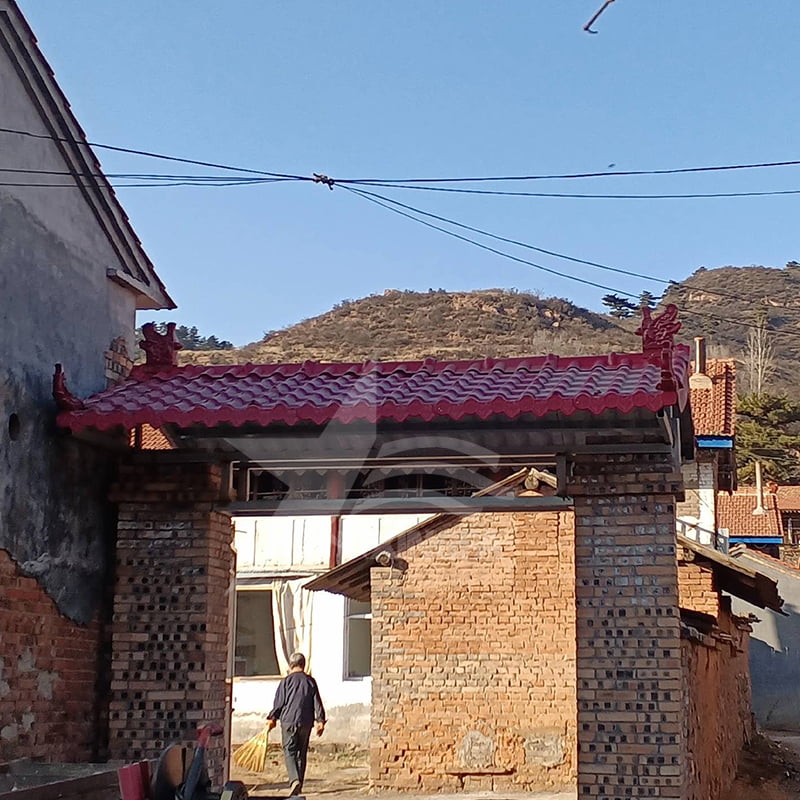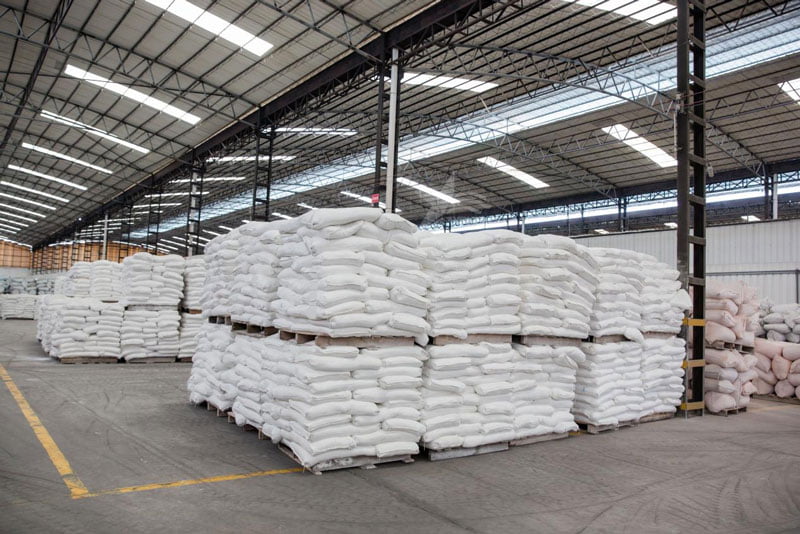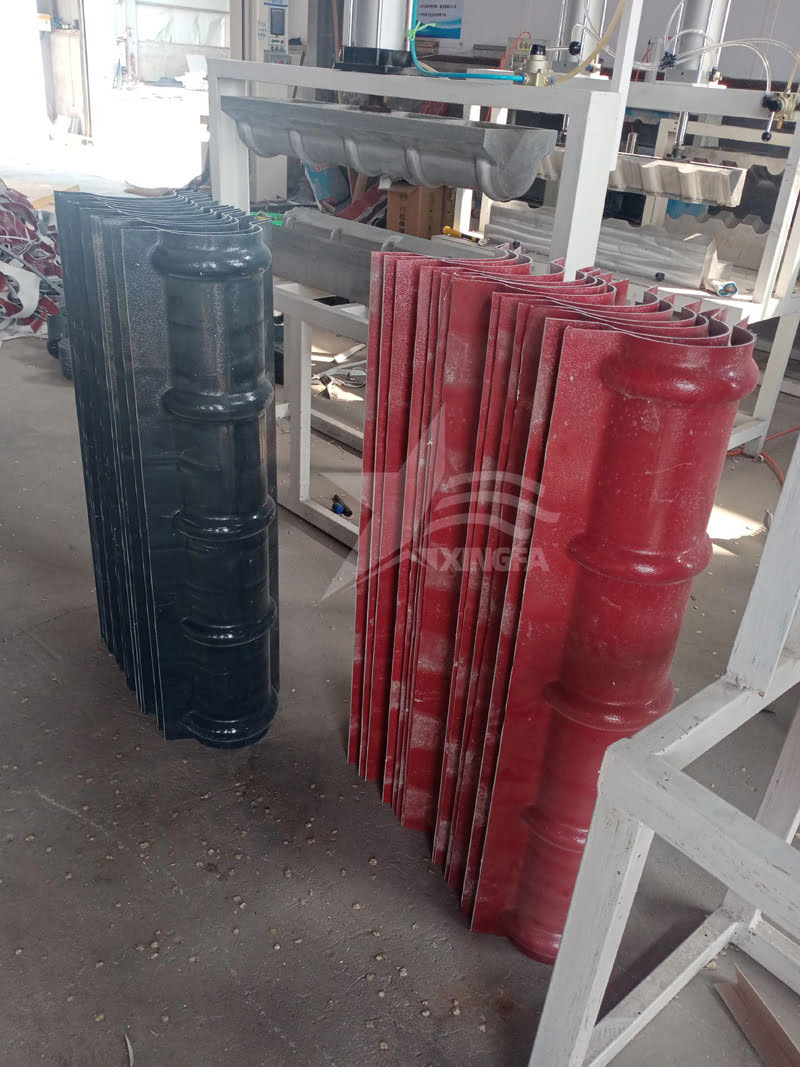Synthetic resin tiles, as a new type of roofing material, have been widely used in the construction industry. They possess various advantages, such as long-lasting color, lightweight, waterproof, durable, thermal insulation, soundproofing, corrosion resistance, wind and earthquake resistance, hail resistance, stain resistance, environmentally friendly, fireproof, insulating, and easy installation. Below is an introduction to the production process of synthetic resin tiles.

Firstly, the initial step in producing synthetic resin tiles is preparing the raw materials. Resin, fillers, and reinforcing materials need to be prepared.

The next step is the preparation of the mixture. Glass fibers and resin are mixed in certain proportions.
After the mixing is completed, we move on to the molding stage. The mixture is poured into pre-prepared molds for shaping. The design of the molds determines the final shape and texture of the resin tiles. Inside the molds, the mixture gradually solidifies.
The molded resin tiles need to undergo curing to enhance their strength and hardness. This can be achieved by heat curing in a constant temperature chamber or by using chemical curing agents to accelerate the process. The curing time and conditions may vary depending on the type of resin used and the manufacturer’s specifications.
Once the resin tiles are fully cured, they need to be cut and trimmed to meet specific size and shape requirements. Professional cutting tools and techniques are used to precisely adjust the dimensions of the resin tiles.

At this stage, the resin tiles are ready for production, but before leaving the factory, they undergo quality inspection. Visual inspection, dimension measurement, and strength testing are essential steps to ensure that the products meet relevant standards and requirements.
